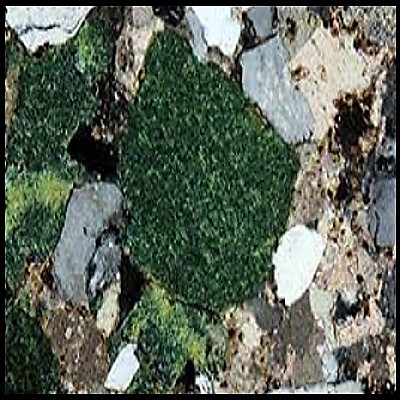Chronology of the Bambucá Shale formation and its potential as source rock, western sector of the Neiva sub-basin – Huila, Colombia
DOI:
https://doi.org/10.24054/bistua.v21i2.2497Keywords:
Bambucá Shale, Biostratigraphy, Biozonation, Calcareous Nannofossils, KerogenAbstract
Improving the knowledge of Colombia's oil basins requires the evaluation and implementation of new strategies to enhance or increase the exploration of new hydrocarbon producing fields or encourage the deepening of geological studies in existing fields. In recent years, there has been a search for ways to maximize the production of hydrocarbon reservoirs, although in the country they have concentrated on the detrital type. This work proposes the search for formations containing carbonate rocks to expand the range of reservoirs of interest. In the work area, the Bambucá shale is characterized by having a high content of organic matter, but detailed information about its petrography, chronology and hydrocarbon potential has not been studied in detail. Carbonate reservoirs such as the Bambucá Shale contain abundant fossil record of microscopic marine brown algae known as calcareous nannofossils. These are an attractive study option to test or improve the resolution of historically assigned ages and evaluate the potential of a formation as a source rock. Preliminary analyses to propose a biozonation and biostratigraphic events of calcareous nannofossils in this formation allowed the identification of an assemblage composed of five predominant Cretaceous species (Cenomanian – Turonian): Quadrum svabenickae, Lithraphidites carniolensis, Calculites obscurus, Eiffellithus spp., and Watznaueria biporta, which are bioformers of the source rock in the study area and confirm the marine origin of sediments with organic matter capable of producing Type II kerogen.
Downloads
References
Bustamante Roldan, J., Jaramillo, C. & Vega, A. (2012). Cuenta Satélite de Medio Ambiente: Cuenta de Activos Físicos Para los Recursos Minerales y Energéticos. Bogotá, D.C.
Holditch, S. (2003). The increasing role of unconventional reservoirs in the future of the oil and gas business. Journal of petroleum technology, 55(11), 34-79. DOI: https://doi.org/10.2118/1103-0034-JPT
Mancini, E. A., Li, P., Goddard, D. A., Ramirez, V., & Talukdar, S. C. (2008). Mesozoic (Upper Jurassic–Lower Cretaceous) deep gas reservoir play, central and eastern Gulf coastal plain. AAPG bulletin, 92(3), 283-308. DOI: https://doi.org/10.1306/11120707084
Caineng, Z., Guangya, Z., Shizhen, T., Suyun, H., Xiaodi, L., Jianzhong, L., … & Xinjing, L. (2010). Geological features, major discoveries, and unconventional petroleum geology in the global petroleum exploration. Petroleum Exploration and Development, 37(2), 129-145.
DOI: https://doi.org/10.1016/S1876-3804(10)60021-3
Slatt, R. M. (2011). Important geological properties of unconventional resource shales. Central European Journal of Geosciences, 3(4), 435-448.
DOI: https://doi.org/10.2478/s13533-011-0042-2
Glorioso, J. C., & Rattia, A. (2012). Unconventional reservoirs: basic petrophysical concepts for shale gas. In SPE/EAGE European unconventional resources conference & exhibition-from potential to production (pp. cp-285). European Association of Geoscientists & Engineers. DOI: https://doi.org/10.2118/153004-MS
Jarvie, D. M. (2012). Shale resource systems for oil and gas: Part 2—Shale-oil resource systems.
McGlade, C., Speirs, J., & Sorrell, S. (2013). Unconventional gas–a review of regional and global resource estimates. Energy, 55, 571-584.
DOI: https://doi.org/10.1016/j.energy.2013.01.048
Ahmed, U., & Meehan, D. N. (Eds.). (2016). Unconventional oil and gas resources: exploitation and development. CRC Press. DOI: 10.1201/b20059-4
Akilu, S., Padmanabhan, E., & Sun, Z. (2021). A review of transport mechanisms and models for unconventional tight shale gas reservoir systems. International Journal of Heat and Mass Transfer, 175, 121125.
DOI: 10.1016/j.ijheatmasstransfer.2021.121125
Aharipour, H., & Masoumi, F. S. (2022). Petrophysical Approach for Unconventional Shale Gas Resources Evaluation. In International Field Exploration and Development Conference (pp. 5589-5595). Springer, Singapore.
Mehana, M., Santos, J. E., Neil, C., Carey, J. W., Guthrie, G., Hyman, J., … & Viswanathan, H. (2022). Shale fundamentals: Experimental and modeling insights. Energy Reports, 8, 11192-11205.
DOI: https://doi.org/10.1016/j.egyr.2022.08.229
Jaffe, A. M., & Manning, R. A. (2000). The shocks of a world of cheap oil. Foreign Aff., 79, 16.
DOI: 10.2307/20049611
Dadwal, S. R. (2001). The Global oil market after 9/11: On the brink of a crisis?. Strategic Analysis, 25(9), 1059-1070.
DOI: https://doi.org/10.1080/09700160108459021
Briceno-Guarupe, L. A. (2011). ANH’s Approach to Colombian Unconventional Hydrocarbons Resources. In 73rd EAGE Conference and Exhibition incorporating SPE EUROPEC 2011 (pp. cp-238). European Association of Geoscientists & Engineers.
García-González, M., Cruz-Guevara, L. E., & Mier-Umaña, R. (2013). Hydrocarbon Prospectivity in The Vaupes-Amazonas Basin, Colombia. Boletín de Geología, 35(2), 15-29.

Additional Files
Published
Versions
- 2023-12-12 (2)
- 2023-11-30 (1)
How to Cite
Issue
Section
License
Copyright (c) 2023 © Autores; Licencia Universidad de Pamplona

This work is licensed under a Creative Commons Attribution-NonCommercial-NoDerivatives 4.0 International License.
© Autores; Licencia Universidad de Pamplona





